

Paro
Bhutan
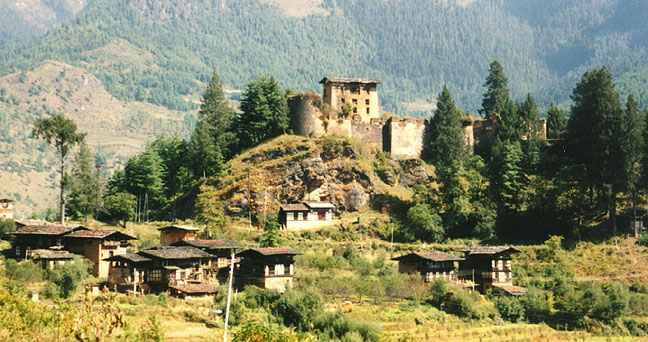
dzong
Some 93 percent of Bhutan’s population lives in 4,500 rural settlements, which vary in size and organization from a group of 20 or more houses in the Duars to scattered groups of houses in the Middle Himalayan valleys and small settlements in the Great Himalayan region. Most of the populated valleys of Bhutan have a dzong, a fortified monastery that also serves as an administrative center.

dzong,
Dzongs are typically built on an outcrop on the steep side of the valley and guarded by rows of Buddhist prayer flags. Bhutan’s architecture is influenced by that of both India and Tibet.
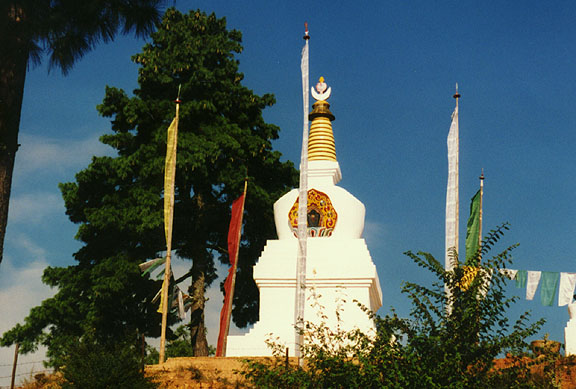
prayer flags and stupa
Before the mid-20th century there were three social classes in Bhutan: the monastic community, led by the nobility; lay civil servants, who ran the government; and farmers, the largest class, living in self-sufficient villages. Elements of these traditional social classes still survive, but since the 1960s society has changed; class division is based on occupation and social status. Also, increased mobility outside the village has led to the development of nuclear family units.

man with scarf of authority
Although men still dominate the politics and economy of Bhutan, development programs that were begun in the 1960s have led to increased opportunities for women in the fields of teaching, nursing, and administration. The National Women’s Association of Bhutan (founded in 1981) is working to improve the socioeconomic status of women in the country.
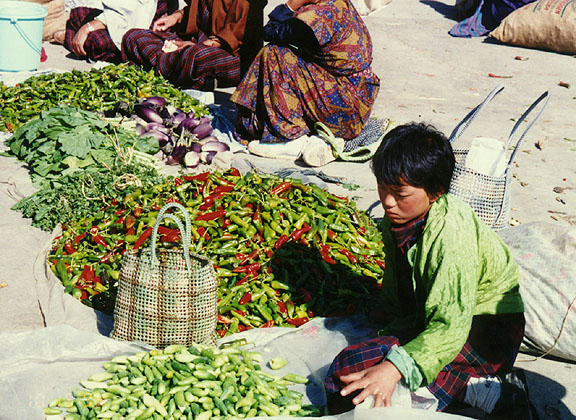
food at the market
Food staples for the Bhutanese include rice and, increasingly, corn. They also eat beef, pork, poultry, goat, yak, and fish. Yak cheese is part of the diet of upland people. Meat soups, rice or corn, and spiced chilies comprise daily food; beverages include buttered tea and beer distilled from cereal grains.
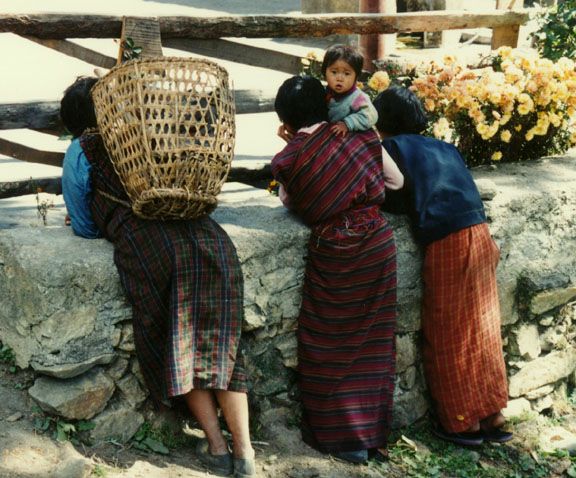
women wearing kira
Traditional clothing is worn throughout Bhutan. Women wear the kira, an ankle-length dress made of a rectangular piece of cloth held at the shoulders with a clip and closed with a woven belt at the waist; underneath they wear a long-sleeved blouse. Social status is indicated by the colors of the kira, the amount of decorative details, and the quality of the cloth.
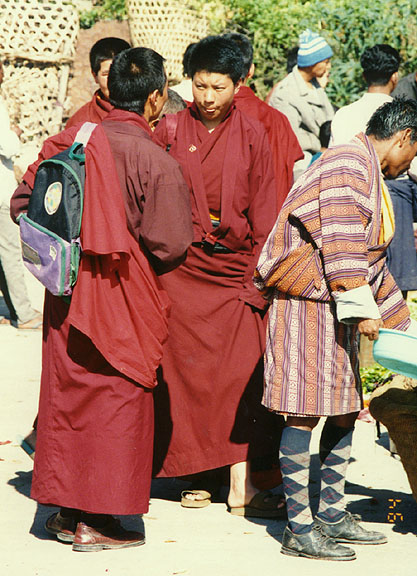
men wearing the gho
Men wear the gho, a wraparound, coatlike, knee-length garment with a narrow belt. Both men and women sometimes wear elaborate earrings. Both sexes also wear scarves or shawls, white for commoners and carefully specified designs, colors, and manner of folding for higher ranking individuals.
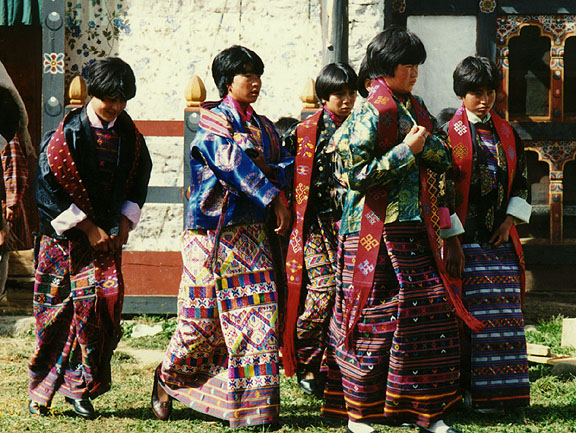
dancers
Dance performances are a popular form of entertainment in Bhutan. Masked dances and dance dramas are held several times a year during Buddhist religious festivals in dzongs throughout Bhutan.
Dancers wearing colorful wooden masks and special costumes create a splendid display of heroes, demons, animals, gods, and caricatures of common people. Many of Bhutan’s dances tell religious, historical, and other types of stories.
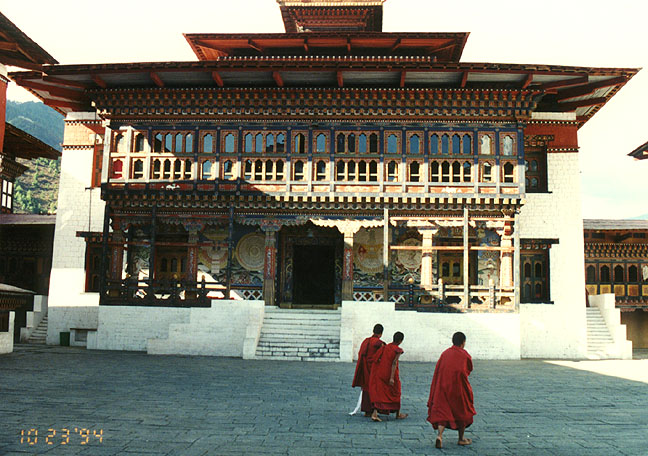
Library in Thimphu
(large collection of Buddhist books, many written on ivory slabs)
A national library is in Thimphu, and a national museum featuring paintings, decorative art, arms, and jewelry is in Paro. Bhutan’s national sport is archery. Competitions are often held weekly as well as throughout the Lunar New Year celebrations in February.
![]()
Market day in Paro, Bhutan
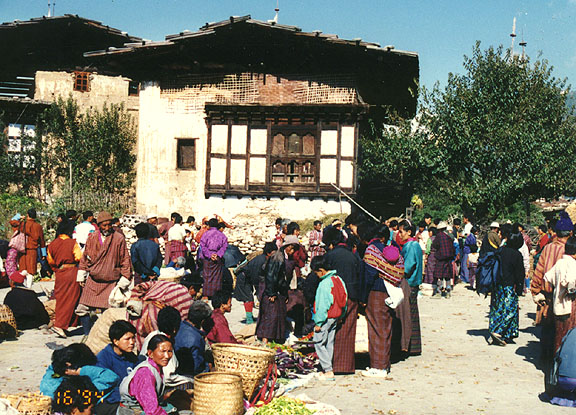

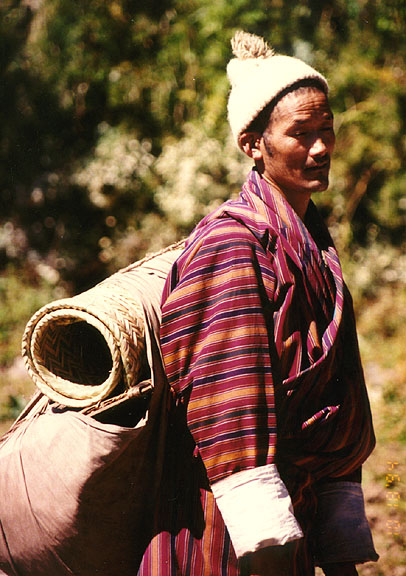
![]()
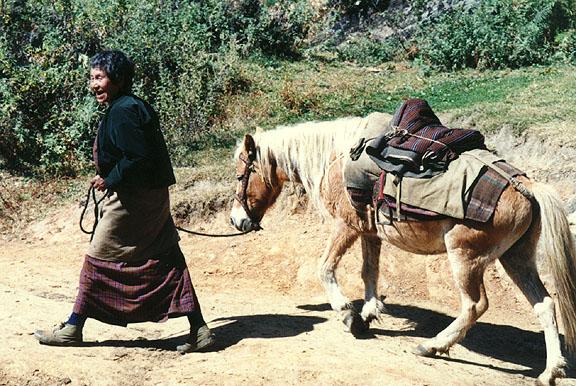
horse or donkey
used to go from town to town
(until 1958 there were no roads, just donkey trails)
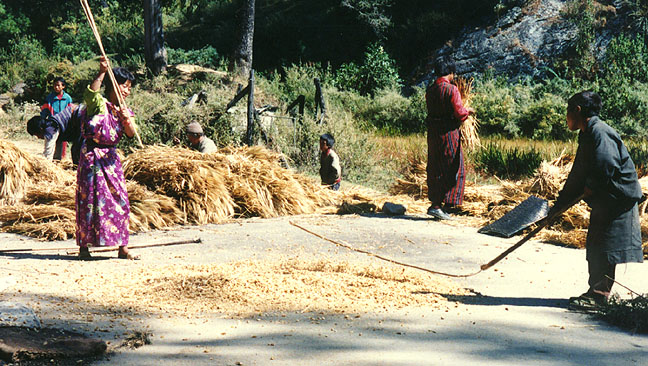
threshing grain
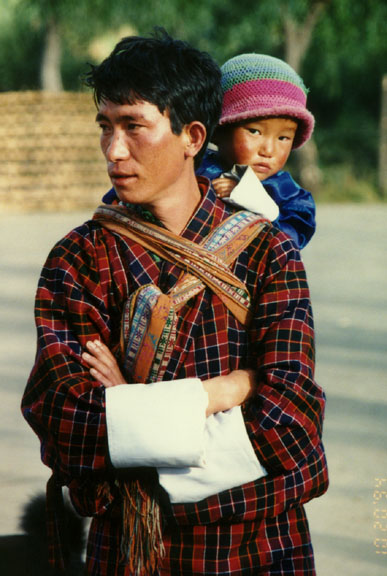
man and child
![]()
![]()